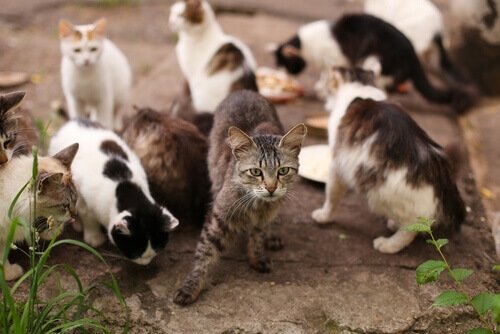Feline Viral Rhinotracheitis: Causes, Symptoms, and Treatment

In today’s article you can learn about a common and very contagious disease in cats. Feline Viral Rhinotracheitis (FVR) is caused by feline herpesvirus (FHV) and/or feline calcivirus (FCV). Cats spread it through direct contact. Even though it’s easy to treat, some cases be fatal or cause permanent damage.
The first things to know
This is a viral infection of the upper respiratory system known as feline influenza and can take place on cats of any age. However, younger and older are ones who are usually prone to contracting this disease and experiencing its serious consequences.
If the cause is from FHV, the affected areas will be the mucous membranes in their nose, throat, and eyes. When it comes from FCV, the affected areas usually are their lungs and the mucous membrane in their mouth.
Both viruses spread extremely fast among groups of cats, in such cases it can be difficult to get rid of. That’s why feline rhinotracheitis has such a bad reputation in breeding centers, cat shelters, and pounds.

FVR is a viral infection of the upper respiratory system. It is extremely contagious, but there are usually positive outcomes with proper treatment.
The symptoms of feline viral rhinotracheitis
A herpesvirus infection will start to show symptoms 2-4 weeks in. The signs show up within 7-14 days with calcivirus. Here are some major signs of rhinotracheitis:
- Sneezing.
- Tearing up.
- Fever.
- Mucus production.
- Conjunctivitis.
- Blepharospasm.
- Over-salivation.
- Coughing.
- Loss of appetite.
- Apathy.
A cat may have troubles breathing if there’s too much buildup in their respiratory pathways. A herpesvirus infection can also cause a corneal ulcer. Calcivirus usually causes pneumonia and ulcerative stomatitis on the tongue and palate.
Spreading feline viral rhinotracheitis
FVR spreads very easily among cats through the tiny droplets that come out when they sneeze, tears and mucus. People’s clothing or an object the cat has had contact of an infected cat’s face can also carry this infection.
Feline calcivirus is always contagious, and still is for a short while after recovery. Herpesvirus, on the other hand, is momentarily contagious and usually is linked to stress.

Due to these habits, cats end up becoming lifelong carriers. Besides just infecting other cats, they might also have short, minor relapses.
Treatment
A vet will run lab tests to properly diagnosis your cat of this non-curable disease. The only thing the vet can do is help relieve the symptoms and prevent/treat any secondary infections. One treat vet use is amoxicillin, which can do a wide variety of things. On top of that:
- Your cat needs antibiotic eye-drops if he has purulent conjunctivitis.
- A good diet is necessary for young or vulnerable cats.
- If your cat dehydrated, connecting him to an IV will be necessary.
- It’s a good idea to give it corticoids if it has lymphocytic-plasmacytic gingivitis stomatitis (this happens with calcivirus carriers).
- Household disinfectants are a great way to kill the virus, but you also need to keep up a good level of general hygiene.
- Isolate any cats that are sick or possibly infected cats.
Fortunately, most cats recover with the proper treatment. Still, many of them will end up having irreversible consequences, such as nasal blockage, excessive nasal secretions, or chronic eye infections.
As always, it’s better to safe than sorry, so make sure your cat gets all of his proper vaccinations. Just remember, vaccines can reduce the seriousness of an infection, but they can’t always prevent it or stop a cat from becoming a carrier.
This text is provided for informational purposes only and does not replace consultation with a professional. If in doubt, consult your specialist.